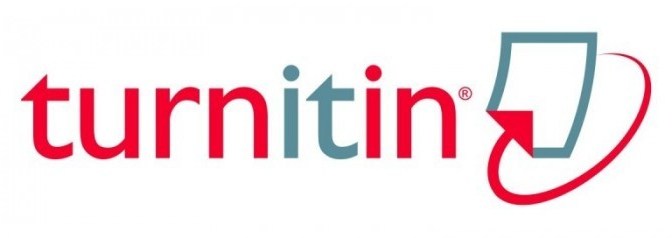PENGEMBANGAN PENDEKATAN OPEN-ENDED DALAM PEMBELAJARAN IPS UNTUK MENINGKATKAN KEMAMPUAN BERPIKIR TINGKAT TINGGI SISWA SEKOLAH DASAR DI KALIMANTAN UTARA
Abstract
Abstract: The application of the Open-ended approach in the social
studies learning process can develop high-level thinking skills of
elementary school students. The formulation of the problem in this study
is how to develop, implement and influence and impact the application
of the Open-Ended learning model in social studies learning to improve
the high-level thinking skills of elementary school students. The method
used is the research and development (R & D) of Borg and Gall. The
research locations were ten elementary schools in five districts/cities in
North Kalimantan. The subjects of this study were high-class teachers
and students (grades 4.5, and 6) using purposive sampling techniques.
The results showed that the Open-Ended learning model was feasible to
use based on peer evaluations, expert lecturers, and effective teachers
could improve the high-level thinking skills of students in Elementary
School seen from the application of the Open-Ended learning model in
the learning process when the experiment class students were more
higher than control class students. In the final model validation test,
where the average experimental class post-test was 83.33 higher than
the control class, which obtained an average of 80.07.
Keywords: Open-Ended Approach; Social Studies Learning; High-Level
Thinking Ability
Full Text:
PDFReferences
Adodo, S. O. (2013). Effect of mind-mapping as a self-regulated learning strategy on students’
achievement in basic science and technology. Mediteranean Journal of Social Science, 4 (6), hlm.
-172.
Badger, E., B. Thomas, (1992). “Open-ended questions in reading,†Practical Assessment, Res. and
Evaluation, Vol. 3, No. 4, pareonline.net
Becker, Shimada. (1997). The Open-Ended Approach. NCTM.
Bloom, B.S. (1956). Taxonomy of Educational Objectives. New York: Longman
Borg, W. R. & Gall, M. D. (2003). Educational Research: An Introduction. New York: Longman.
Cooney, T. J. 2002. et al. Open Ended Assessment in Math. Web.
http://books.heinemann.com/math/about.cfm (Diakses 15 Februari 2018).
Dahar, R. W. 1996. Teori-teori Belajar. Erlangga. Jakarta.
Dian Kurniati, Romi Harimukti, dan Nur Asiyah Jamil, Desember 2016. Kemampuan berpikir
Tingkat tinggi siswa SMP di Kabupaten Jember dalam menyelesaikan soal berstandar pisa
Jurnal Penelitian dan Evaluasi Pendidikan. Volume 20, No 2, (Pg.142-155) Online:
http://journal.uny.ac.id/index.php/jpep
Esa-Matti Järvinen dan J. Twyford (January 2000), Volume 10, Issue 1, pp 21–41 pada International
Journal of Technology and Design Education. Springer Netherlands Publisher.
Filsaime, Dennis.K. (2008). Menguak Rahasia Berpikir Kritis dan Kreatif. Jakarta : Prestasi Pustakaraya.
Freedman, R. L. H. (1994). Open-ended questioning. Menlo Park: Addison-Wesley Publishing.
Ghozali, I. (2006). Aplikasi analisis multivariate dengan program SPSS. Semarang:Badan Penerbit
Universitas Diponegoro.
Hake, Richard. (19 Januari 2019). Design-Based Research In Physics Education: A Review.
https://www.researchgate.net/publication/250270804.pdf.
Jerry P. Becker, Shigeru Shimada. (1997). The Open-ended approach:a new proposal for teaching
mathematics: National Council of Teachers of Mathematics.
Kadir (2006). Pembelajaran dengan Pendekatan Open-ended tentang soal-soal Terbuka (The Open-ended
Approads) IAIN Indonesia Sosial Equity Project (IISEP).
Katsuro, T. (2000). Open-ended Approach and Inprovement of Classroom Teaching Mathematics
Education In Japan. Japan Society of Mathematics Education (JSME).
King, F. D., Gordon, L. & Rohani, F. (1997). Assessment & evaluation higher order thinking skills.
[online]
Krathwohl, D. R. 2002. A Revision of Bloom Taxonomy: An Overview. Journal Theory Into Practice, Vol.
(4).
Mendikbud. (2013). Peraturan Menteri Pendidikan dan Kebudayaan RI Nomor 65, Tahun 2013, tentang
Standar Proses.
Sapriya, dkk. 2007. Pengembangan IPS di SD. Bandung: UPI PRESS.
Sugiyono, 2009. Statistik Untuk penelitian. Bandung: Alfabeta.
Sukardjo. (2012). Buku pegangan kuliah evaluasi pembelajaran IPA. ProgramStudi Pendidikan Sains
ProgramPascasarjana UNY.
Sawada, Toshio, 1980. Arithmetic and Mathematics Instruction Based on Open-ended Problems- a
Proposal. Tokyo National Institute for Educational Research. Jurnal Centre for Science
Education.
Schnotz, W. & Kurschner, C. (2007). A reconsideration of cognitive load theory. Journal of Educational
Psychologist, 19, hlm. 469-508.
Shin Yen, T., & Halili, S, H. 2015. Effective Teaching Of Higher-Order Thinking (HOT) in Education.
The Online Journal of Distance Education and e-Learning. Vol. 3(2) : 41-47.
Zohar, A., Weiberger., dan Tamir, P (1994) The Effect of Biologi Critical Thingking Project on
Development of Critical Thungking. Dalam W.C Kyle (ed) Jurnal Of Ressearch on Science
Teaching.
DOI: https://doi.org/10.35334/judikdasborneo.v1i2.1264
Refbacks
- There are currently no refbacks.
Copyright (c) 2020 Jurnal Pendidikan Dasar Borneo
Contact Person:
A. Wilda Indra Nanna (Hp: 081253670923)
Ady Saputra (Hp: 082329693700)
Alamat Sekretariat:
Program Studi Pendidikan Guru Sekolah Dasar
Gedung Fakultas Keguruan dan Ilmu Pendidikan, Universitas Borneo Tarakan
Jl. Amal Lama No.1 Kota Tarakan, North Kalimantan (Kalimantan Utara) Indonesia
Â





